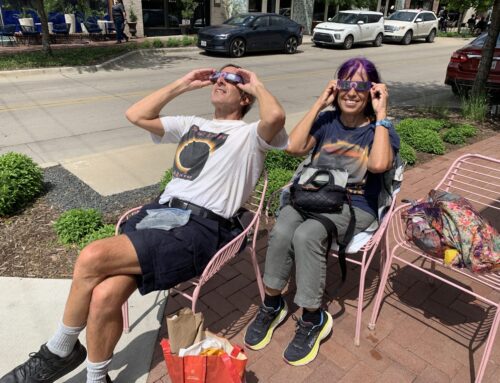Flesh and faith
Most people have no trouble believing that Jesus was killed. He was betrayed, falsely accused, handed over to the government and publicly executed.
Christians also believe that Jesus didn’t stay dead. He appeared alive after three days. Four accounts in the Bible tell of how he rose again to the surprise of his disciples. And each account stresses a peculiar detail about the resurrected Jesus: he still had his old body.
Over and over, Jesus says to his disciples, “See my hands. Look where the nails were. Put your hand in my side.” He had scars. He breathed on the disciples, whispering, “Receive the Holy Spirit.” He ate some fish and bread by a fire on the beach. He walked along the road with two of his followers.
There’s another strange detail. In the gospel of Matthew, Jesus appeared to his disciples on a mountain. Matthew 28:17 says, “When they saw him, they worshipped him. But some doubted.” He was standing right before them. Why would they doubt? Perhaps he looked different. He had been through a lot: torture, dehydration, death. Did his face and body look the same, but different?
It’s like the gospel writers were driving at something important. Why make such a big deal about the movements and details of his body?
Perhaps the gospel writers wanted us to know that this was no ghost or someone pretending to be Jesus. Apparitions don’t eat or breathe. The point is that the resurrection wasn’t a religious abstraction. This was the same body that got up out of the grave clothes. It was hard to accept even for those who saw him face to face.
But perhaps there is something deeper going on that applies to us. In the centuries following the resurrection, it has always been tempting for Jesus’ followers to over-spiritualize him, keep him in the clouds and somehow distant from the fleshy, broken mess in which humanity seems to always find itself.
Jesus came to the earth through incarnation (meaning in the flesh) and appeared again after his cross and burial in the flesh. He taught a spirituality grounded deeply in the dirt, using examples of fields, fish, wind, flowers, water and wine. He knew affliction and pain.
The return of Jesus in the flesh means that we, too, can experience the powerful life of God in our flesh. Spirituality isn’t mushy pie-in-the-sky or the stuff of pithy phrases. It’s the breath of God in the dust of the earth. It’s the possibility of redemption when we fail miserably and the joy of knowing that love can overcome the worst our enemies can throw at us. It’s the serendipitous discovery that our increasingly aging bodies can manifest love to a greater and greater degree.
Of course, some will always doubt, even when this truth is staring them in the face. But many, many have believed the good news, or want to believe.





